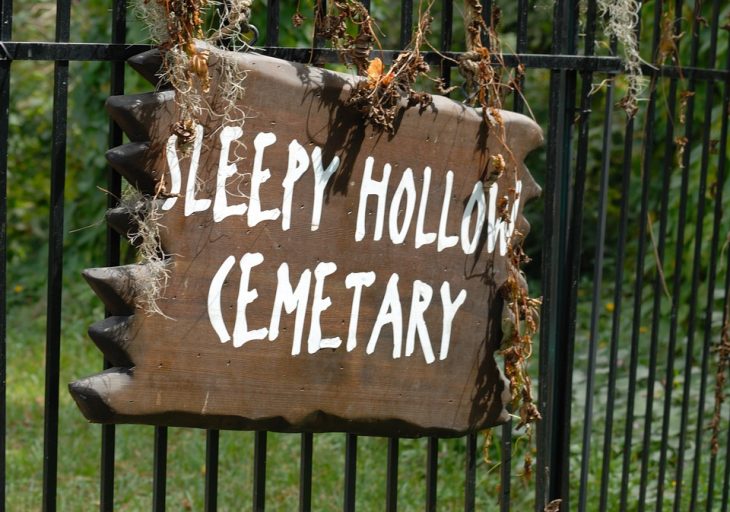
Under the Spell of Sleepy Hollow
Miranda Alexander
Whether or not we like to admit it, we all take pleasure in sitting under the stars while soaking in the warm breath of a campfire and listening to ghost stories. We often find ourselves delighting in the thrill that a spooky tale offers to us. Of course, this is not news to us, for people have adored ghost stories for ages.
American author, Washington Irving introduced a breathtaking scare to the public when he published The Sketchbook of Geoffrey Crayon, which contained a chilling short story titled The Legend of Sleepy Hollow. This story in particular, is thought to be derived from a German folktale. It is centered around Ichabod Crane, a native of Connecticut who ventures into the small town of Sleepy Hollow to practice as a schoolteacher and a singing master. He is described as having a terribly thin build and a slightly greedy nature. These traits do not aid him when he decides to win over the lovely Katrina Van Tassel. Unbeknownst to Ichabod, Katrina is already attracted to Brom.
This is a theme that appears many times in literature, two men battling over a beautiful woman, it is a timeless conflict that we know and draw amusement from. Irving brings even more humor to the reader by illustrating the contrasts between Ichabod and Brom. As I stated earlier, Ichabod is thin and lanky in stature. Brom on the other hand, is burly and and known for his strength. The mere idea of these two men dueling it out is rather comical. However, we must keep in mind that Irving never openly comes out and tells us the two men are at conflicting odds. This is a popular perception our minds have drawn from the various film adaptations of the story.
Ichabod’s hope is fortified when he receives an invitation to a party at the home of the Van Tassels. However, he is disappointed and rejected by Katrina and soon finds himself on a dark path home. It is on this path that he encounters an unsettling sight, a headless figure riding horseback. Ichabod recognizes the figure as the ghost of the Headless Horseman, rumored to be a Hessian solider who lost his head to the impact of a cannon ball during the Revolutionary War. Once the Headless Horseman begins to pursue Ichabod, he rushes towards the bridge where the ghost is said to vanish and not follow. But of course, this does not play out as planned. The Headless Horseman hurls his detached “head” at Ichabod, knocking him off his horse in the process.
The next morning, Ichabod’s horse returns to town, its rider does not. The townspeople search for him, only to find his hat, saddle, and a crushed pumpkin. It is natural to assume that the schoolteacher fled from town in a frightened panic caused by a cruel prank carried out by Brom. However, Irving never reveals this in the text, he only hints at the possibility of a prank. I believe Irving did this to expand the reader’s sense imagination. He leaves us with an uncertain ending so that we can choose if we wish, to invest in the idea of the unknown.
One thought on “Under the Spell of Sleepy Hollow”
This is very well written! I appreciate how blatantly you pointed out the basic storybook struggle of a love triangle that this story has mixed in with the weird realization that the whole area is haunted by a guy with a pumpkin for head. I also like that you put the story into perspective outside of the movies and cartoons we’ve all seen growing up and that you said something about the time period. Hearing ghost stories can be confusing when you don’t remember that the people who came up with the stories may have been afraid of things that we wouldn’t be, so putting ourselves in the shoes of the original audience makes the experience of the story much better.